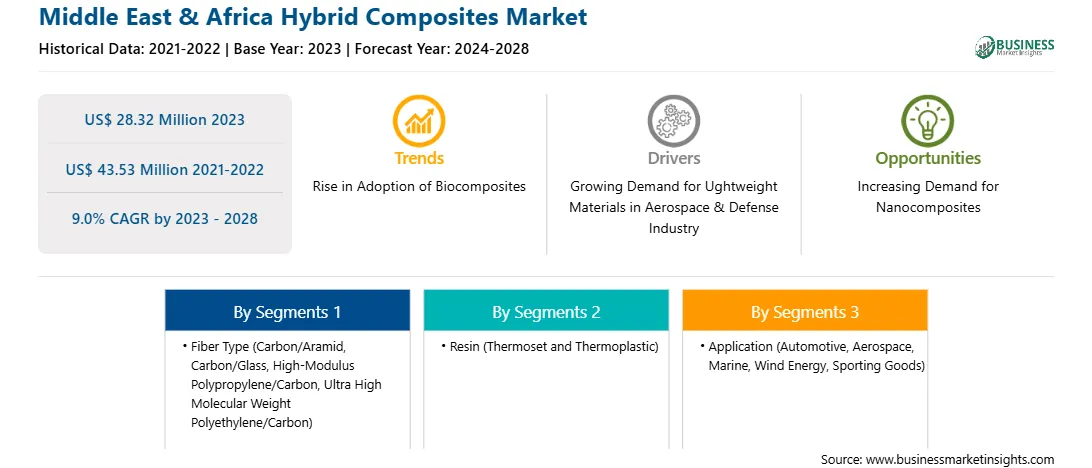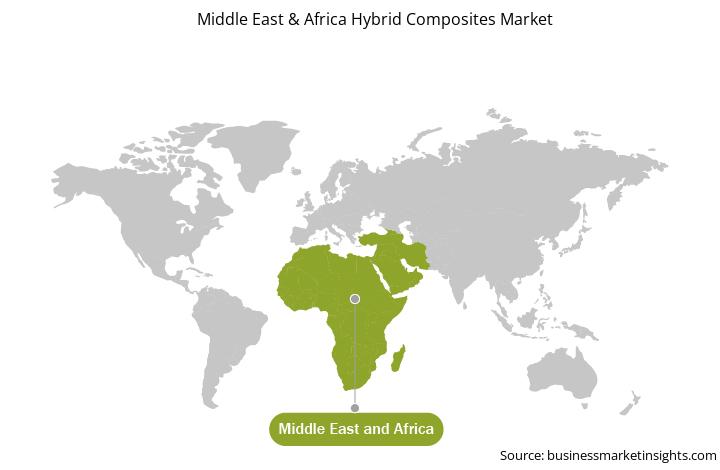Rapid developments in material technology continue to support variations in the structure of wind turbines. Many of these variations were primarily introduced to reduce the prices of turbines. Factors such as corrosion resistance, fatigue resistance, toughness, rigidity, weight, and appearance of wind turbines significantly impact their operations. Glass fiber-reinforced plastics (GRPs) are the most used type of composite material in wind turbine manufacturing. The major benefits of using GRPs include hybrid mechanical properties, high corrosion resistance, high-temperature tolerance, simplified manufacturing, and favorable costs.
Lightweight materials offer excellent potential for increasing vehicle efficiency as their acceleration requires less energy than heavier ones. According to the Office of Energy Efficiency & Renewable Energy, a 10% decrease in vehicle weight can improve fuel economy by 6–8%. Substituting cast iron and traditional steel components with lightweight materials, such as high-strength steel, aluminum (Al) alloys, magnesium (Mg) alloys, carbon fiber, and polymer composites, can reduce the weight of a vehicle body and chassis by up to 50%, thereby reducing the fuel consumption of a vehicle. The application of hybrid composites in the automotive sector is growing at a significant pace. In this sector, plastics are used in large quantities to produce composites. Hybrid composites have excellent acoustic and thermal properties, which makes them ideal for vehicle interior parts. Furthermore, they are suitable for the manufacturing of non-structural interior components, including seat fillers, seat backs, headliners, interior panels, and dashboards. Therefore, the growing demand for hybrid composites from the automotive industry for the manufacturing of fuel-efficient, lightweight vehicles such as electric vehicles (EVs) is driving the hybrid composites market.
The Middle East & Africa hybrid composites market is segmented into South Africa, Saudi Arabia, the UAE, and the Rest of Middle East & Africa. The growth of the aviation industry due to various government initiatives is among the significant factors driving the demand for hybrid composites in the region as it provides durability and toughness to the aircraft. For instance, on August 14, 2023, the Saudi Arabian government invested US$ 100 billion in the aviation sector to host at least 300 million passengers and 5 million tons of freight by 2030. The aviation industry in the Middle East & Africa is also fueled by rapid industrialization and growth in disposable income, resulting in a surge of passengers opting for air travel. Further, according to the report by International Trade Administration, the UAE government has supported and invested in various initiatives in the aerospace industry, thus increasing the number of partnerships among significant market players and Original Equipment Manufacturers (OEMs). Therefore, the growing aerospace industry in the region boosts the demand for hybrid composites.
Strategic insights for the Middle East & Africa Hybrid Composites provides data-driven analysis of the industry landscape, including current trends, key players, and regional nuances. These insights offer actionable recommendations, enabling readers to differentiate themselves from competitors by identifying untapped segments or developing unique value propositions. Leveraging data analytics, these insights help industry players anticipate the market shifts, whether investors, manufacturers, or other stakeholders. A future-oriented perspective is essential, helping stakeholders anticipate market shifts and position themselves for long-term success in this dynamic region. Ultimately, effective strategic insights empower readers to make informed decisions that drive profitability and achieve their business objectives within the market. The geographic scope of the Middle East & Africa Hybrid Composites refers to the specific areas in which a business operates and competes. Understanding local distinctions, such as diverse consumer preferences (e.g., demand for specific plug types or battery backup durations), varying economic conditions, and regulatory environments, is crucial for tailoring strategies to specific markets. Businesses can expand their reach by identifying underserved areas or adapting their offerings to meet local demands. A clear market focus allows for more effective resource allocation, targeted marketing campaigns, and better positioning against local competitors, ultimately driving growth in those targeted areas.Middle East & Africa Hybrid Composites Strategic Insights

Middle East & Africa Hybrid Composites Report Scope
Report Attribute
Details
Market size in 2023
US$ 28.32 Million
Market Size by 2028
US$ 43.53 Million
CAGR (2023 - 2028) 9.0%
Historical Data
2021-2022
Forecast period
2024-2028
Segments Covered
By Fiber Type
By Resin
By Application
Regions and Countries Covered
Middle East and Africa
Market leaders and key company profiles
Middle East & Africa Hybrid Composites Regional Insights

Middle East & Africa Hybrid Composites Market Segmentation
The Middle East & Africa hybrid composites market is segmented into fiber type, resin, application, and country.
Based on fiber type, the Middle East & Africa hybrid composites market is segmented into carbon/aramid, carbon/glass, high-modulus polypropylene (HMPP)/carbon, ultra high molecular weight polyethylene (UHMWPE)/ carbon, and others. The carbon/aramid segment held the largest share of the Middle East & Africa hybrid composites market in 2023.
Based on resin, the Middle East & Africa hybrid composites market is segmented into thermoset and thermoplastic. The thermoset segment held a larger share of the Middle East & Africa hybrid composites market in 2023.
Based on application, the Middle East & Africa hybrid composites market is segmented into automotive, aerospace, marine, wind energy, sporting goods, and others. The automotive segment held the largest share of the Middle East & Africa hybrid composites market in 2023.
Based on country, the Middle East & Africa hybrid composites market is segmented into South Africa, Saudi Arabia, the UAE, and the Rest of Middle East & Africa. Saudi Arabia dominated the Middle East & Africa hybrid composites market in 2023.
Avient Corp, Gurit Holding AG, Hexcel Corp, Lanxess AG, Mitsubishi Chemical Holdings Corp, PGTEX China Co Ltd, SGL Carbon SE, Solvay SA, and Toray Industries Inc are some of the leading companies operating in the Middle East & Africa hybrid composites market.
The Middle East & Africa Hybrid Composites Market is valued at US$ 28.32 Million in 2023, it is projected to reach US$ 43.53 Million by 2028.
As per our report Middle East & Africa Hybrid Composites Market, the market size is valued at US$ 28.32 Million in 2023, projecting it to reach US$ 43.53 Million by 2028. This translates to a CAGR of approximately 9.0% during the forecast period.
The Middle East & Africa Hybrid Composites Market report typically cover these key segments-
The historic period, base year, and forecast period can vary slightly depending on the specific market research report. However, for the Middle East & Africa Hybrid Composites Market report:
The Middle East & Africa Hybrid Composites Market is populated by several key players, each contributing to its growth and innovation. Some of the major players include:
The Middle East & Africa Hybrid Composites Market report is valuable for diverse stakeholders, including:
Essentially, anyone involved in or considering involvement in the Middle East & Africa Hybrid Composites Market value chain can benefit from the information contained in a comprehensive market report.